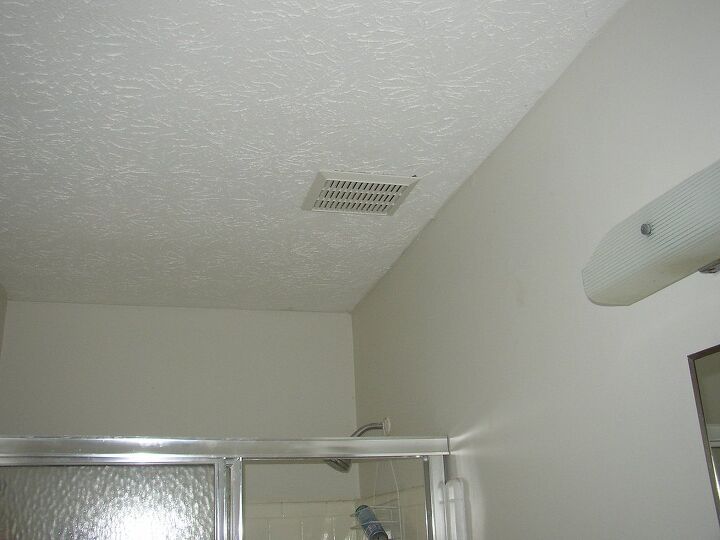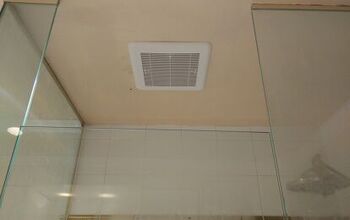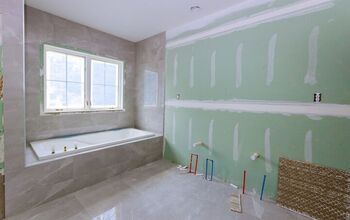Can I Vent My Bathroom Exhaust Fan Into The Attic? (Find Out Now!)

After dealing with a stuffy bathroom for so long, you’ve finally decided to install an exhaust fan. You’re excited about the new addition, but suddenly, you realize that there’s a bit of a problem. Right now, the exhaust from your bathroom has nowhere to go.
You may have looked up in search of an area to use for bathroom exhaust disposal and thought of your attic. Can you indeed use your attic as a receptacle for all that bathroom exhaust?
Using your attic to get rid of the exhaust from your bathroom fan is a bad idea in many ways. You should avoid using your attic as a receptacle for bathroom exhaust because building codes prohibit it. Plus, you may effectively ruin your attic if you opt to use it for that purpose.
Many homeowners may look at their attic as a potential disposal spot for their bathroom exhaust. Find out if that’s a wise move to make by continuing with the rest of this article.
Do You Need Ducts or Vents Installation or Replacement?
Get free, zero-commitment quotes from pro contractors near you.

Can You Vent Bathroom Exhaust into Your Attic?
If you only use your attic for storage, dumping your bathroom exhaust into it may seem acceptable. Since no one’s up there anyway, you figure that filling it with bathroom exhaust is not going to do any harm.
Before you push through with that move, it’s important to understand some things about your attic. Learning about those things will tell you if venting bathroom exhaust into your attic is a good idea. Review them by reading through the entries below.
Venting Bathroom into Your Attic Is Illegal
Why should you avoid directing your bathroom exhaust into your attic? The number one reason to avoid that is because building codes specifically outlaw it.
This document prepared by the Environmental Protection Agency sheds more light on the matter. The International Residential Code highlighted in the document notes that “air shall not be exhausted into an attic”. The only exception to that rule is whole house ventilation, but that’s not what we’re talking about here.
Chances are that a contractor will reject your request if you ask them to direct your bathroom vent into your attic. In all likelihood, they will suggest a different location in your home that can accommodate that vent. Don’t be frustrated if that happens because they are just following the residential building code.
Bathroom Exhaust Can Compromise the Structural Integrity of Your Attic
The fact that venting bathroom exhaust into your attic is illegal should be reason enough to forget the idea. Some homeowners are stubborn though. They may want to push through believing they won’t get caught.
Even if you don’t get caught, releasing the bathroom exhaust into your attic can still turn out badly. That’s because the kind of air coming from your bathroom can be damaging to your attic.
Bathroom exhaust is typically very humid because it includes the residue from your warm showers. The way your bathroom is designed can also lead to the production of more moisture. All that moisture going from your bathroom to your attic is a problem. The porous wood in your attic is going to absorb that moisture. After some time, you may find pockets of mold growing in your attic.
Constant exposure to an excessive amount of moisture can also cause the wood in your attic to start rotting away. Continue dumping exhaust into that part of your home and you could effectively ruin it.
Mold in Your Attic Can Lead to Health Issues
Too much moisture in your attic is bad not just because it can damage that part of your home. It can also be bad for your health.
The presence of mold can cause a variety of health issues. Per the Centers for Disease Control and Prevention, people sensitive to mold may develop a stuffy nose in its presence. They may also start to feel itchy all over.
Folks who are allergic to mold may suffer from more serious health problems. They may develop a fever after prolonged exposure to mold. They may also have some difficulty breathing.
You do not want to share your household with mold. Count that as another reason why you must avoid using your attic as a container for bathroom exhaust.
Humid Attics Can Become Breeding Grounds for Pests
Humid environments may not be comfortable for us, but many insects love them. They are even drawn to humid environments.
Your bathroom exhaust-soaked attic is going to look very appealing to insects in your area. If they can get into your attic somehow, they will likely stay there. Insects that love humid environments include centipedes, cockroaches, and mosquitoes. Unless you want those insects as house guests, you should keep the exhaust out of your attic.
Your Home’s Energy Efficiency Will Be Affected
All that humid air in your attic is also going to take a toll on your home’s energy efficiency. Your air conditioner may have to work way harder to make up for all that warm air.
Keep using your attic to collect bathroom exhaust and you can bank on your cooling expenses spiking. Avoid wasting money and energy by venting your bathroom fan differently.
Where Should You Vent Your Bathroom Exhaust Fan?
Since you cannot use the attic as a receptacle for the bathroom exhaust, where should you direct all that humid air? We’ve listed three spots that are worth considering if you need a release area.
A Side Wall Leading Outside
Probably the best spot to place the exhaust duct for your bathroom fan is along one of your exterior side walls. Choose the exterior wall that is closest to the bathroom so the duct doesn’t have to be that long.
Creating an opening along the side of your home to accommodate the exhaust duct should not be an issue. You can also install a cover on top of that opening. That cover will stop air and insects from entering your home via that spot.
A Portion of Your Home’s Soffit
Homeowners can also use the soffit if they need a spot to run their bathroom duct through. The soffit is a good spot because it’s accessible and any opening there is easy to conceal.
Just remember that the vent should go through your soffit and end up outside. You don’t want the exhaust releasing inside the soffit because that will be bad for your attic.
The Roof
The roof is probably the spot most often used to house the exhaust duct. It certainly works for that purpose but you need to be careful when installing the duct there. Seal the opening properly so water doesn’t leak from there whenever there’s rain in your area.
Do You Need Ducts or Vents Installation or Replacement?
Get free, zero-commitment quotes from pro contractors near you.

Related Questions
How Long Will Your Bathroom Exhaust Fan Last?
Bathroom exhaust fans can last for years assuming proper maintenance. Clean them regularly because they will inevitably get covered in dust and all kinds of debris as they work.You can tell that bathroom fans are about to give out when they start to rattle loudly while in use. Pick up a replacement fan as soon as you start hearing those noises.
What Kind of Bathroom Exhaust Fan Do I Need?
When choosing a bathroom exhaust fan, you need to consider where you’ll install it and the size of your bathroom. Many bathroom fans are designed to be mounted on ceilings while others can be installed on walls. Purchase the model that fits your desired setup.Meanwhile, the size of your bathroom will tell you just how powerful your exhaust fan needs to be. Refer to the cubic feet per minute (CFM) rating of the fan to determine how powerful it is.Generally speaking, a fan with a CFM rating of 50 will fit a bathroom that spans 50 square feet. You can add one point of CFM rating for each additional square foot.
Related Guide

Gary Evans is passionate about home improvement. He loves finding out how to make improvements in the easiest, most practical, and most affordable ways. Upgrading his home kitchen is one of his ongoing hobbies. Gary is also a long-time content creator and enjoys spending his free time tending to his hydroponic vegetable garden.
More by Gary Evans























![Cost To Drill A Well [Pricing Per Foot & Cost By State]](https://cdn-fastly.upgradedhome.com/media/2023/07/31/9074980/cost-to-drill-a-well-pricing-per-foot-cost-by-state.jpg?size=350x220)



